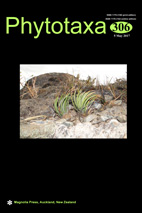Abstract
The systematic relationship between the genera Myosoton and Stellaria is a currently controversial. In this study, we compared their embryological characteristics of these two taxa using conventional paraffin section techniques and scanning electron microscopy. The results obtained showed that Myosoton and Stellaria share some common features. They all have tetrasporangiate anthers with dicotyledonous wall, secretory tapetum, microspore mother cells with simultaneous cytokinesis, tetrahedral tetrad, 3-celled mature pollen grains, linear megaspore tetrad, monosporic polygonum embryo sac, ovary with axial placenta at early development stage, secondary free central placenta at mature stage, bitegmic, crassinucellate amphitropous ovule, micropyle formed from inner integument, caryophyllad embryogenesis, nuclear endosperm, and seed with perisperm. In addition, their seed morphologies are also very similar. Both have rounded, polygonal seed coat cells with upward protrudings, V-shaped margin of testa cells and cross-intercellular contacts. The embryological characteristics support that genus Myosoton should be merged into genus Stellaria.

